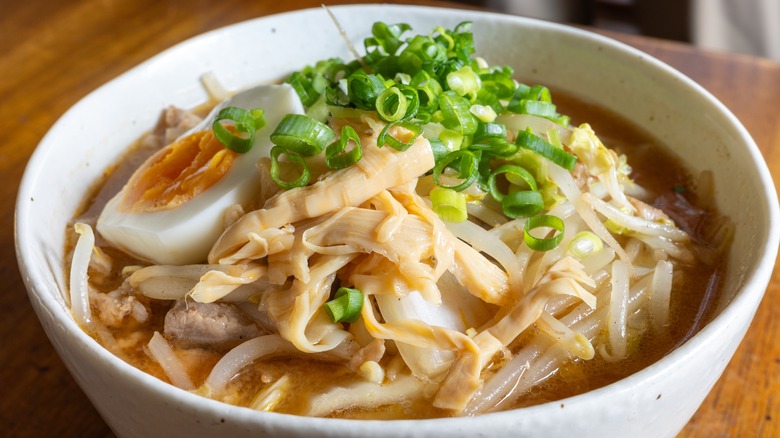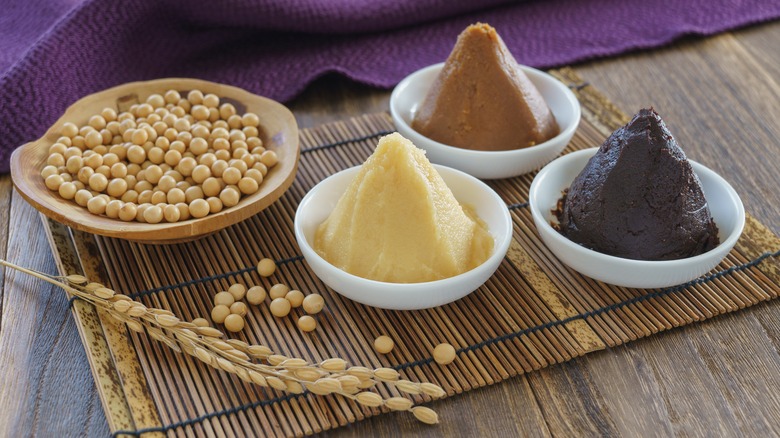The Absolute Best Miso To Use For Ramen
When it comes to stocking your pantry with quality miso, you might be surprised to see just how many varieties of the Japanese condiment are available. There's shiro (white), aka (red), awase (mixed), hatcho (soybean only), mugi (barley), and more — each one offering a different umami flavor profile. We spoke to James Bailey, the executive chef of Momofuku in Las Vegas, to find out what is the absolute best miso to use for ramen.
Chef Bailey confirmed that while there are a lot of different types of miso out there, he has a favorite: "Shiro miso is a solid all-around choice. Chickpea miso is a tasty ingredient too if you're looking for something with a unique character." For those unfamiliar, shiro miso, commonly referred to as "white miso" in the States, is a type of miso made with a mixture of either soybeans and rice or soybeans and barley. The color profile of your miso lets you know the length of time it's been fermented, so a white or light miso isn't fermented for as long as a red or even yellow miso. A lesser fermentation time makes the flavor more subtle and not as likely to overpower an already layered dish like ramen.
Tips for using Shiro miso
Miso can be a divisive ingredient for those who haven't had experience with salty, paste concentrate. But, if you learn how to use just the right amount, you'll open up a world of creative flavoring opportunities. If you're miso-curious, we recommend first trying to replace your instant ramen flavor packets with a tablespoon of miso paste. This is a low-commitment way of seeing if you like the flavor profile of the miso paste you use, and it will tell you if you're the kind of person who likes a lot of miso or just a taste. If you're already taking the time to make ramen from scratch, then chances are you're all in on miso considering it's one of the main flavor agents in ramen broth.
White miso is not only milder than its more fermented counterparts, but it's also sweeter, which makes it an excellent choice when making miso dressing, a miso-flavored cocktail, or miso mashed potatoes. A good rule of thumb when deciding whether or not to use shiro miso when pushing your culinary boundaries, is choosing to experiment with dishes that would flourish with a sweet and savory element. If you can see yourself adding things like tahini, caramelized onions, or honey — then you should also consider experimenting with miso paste.

